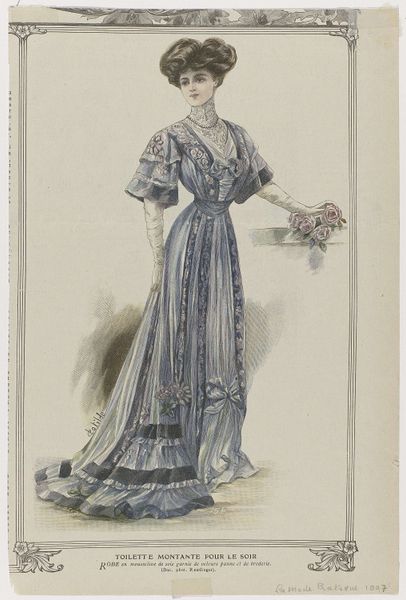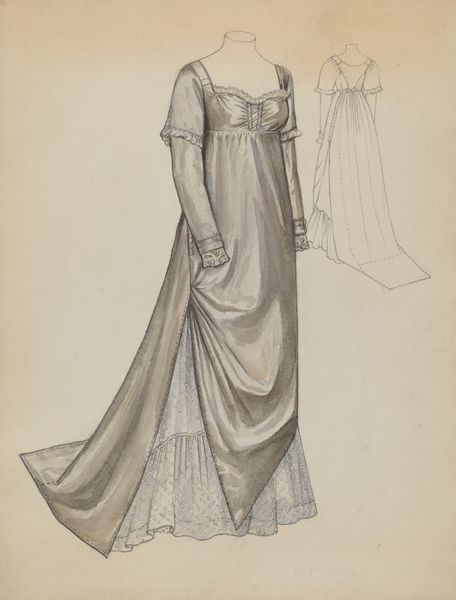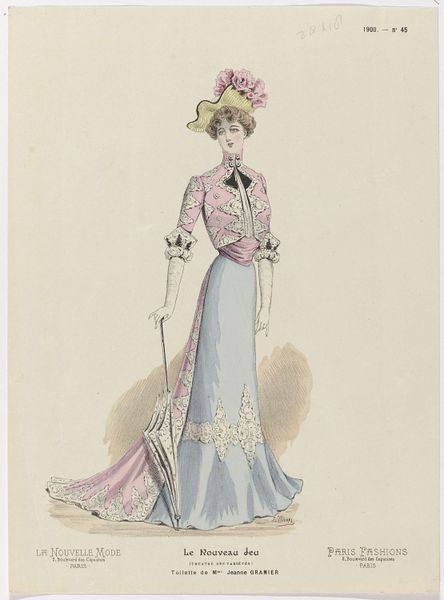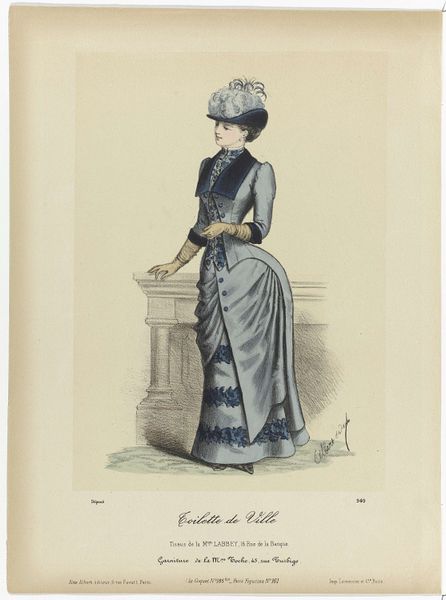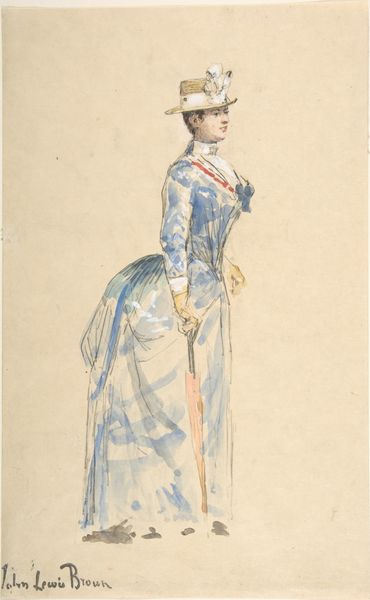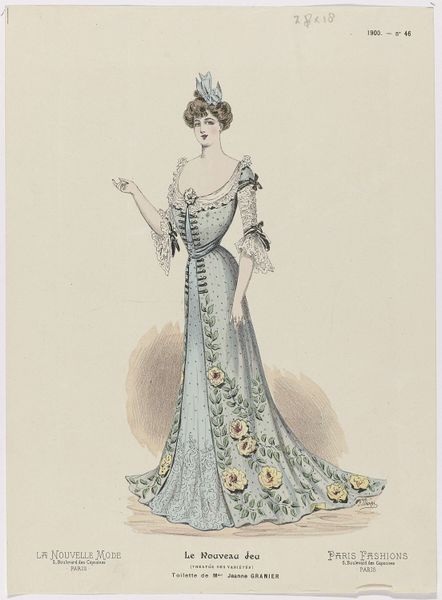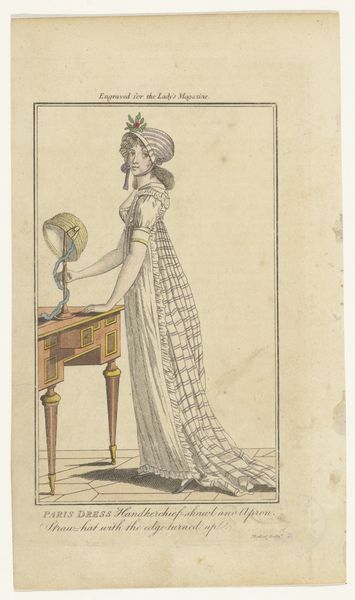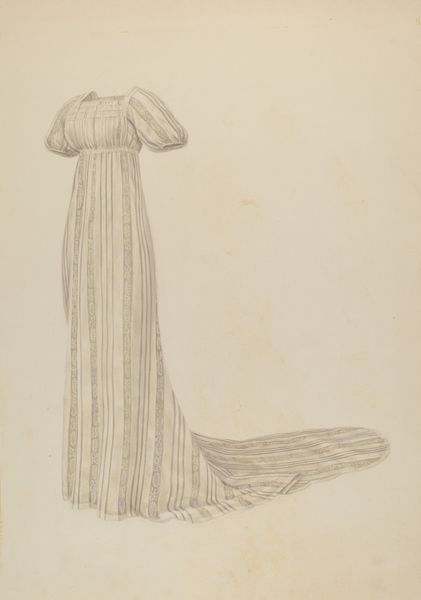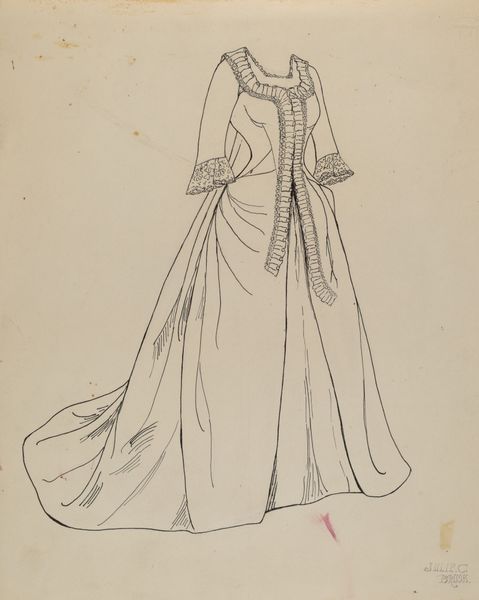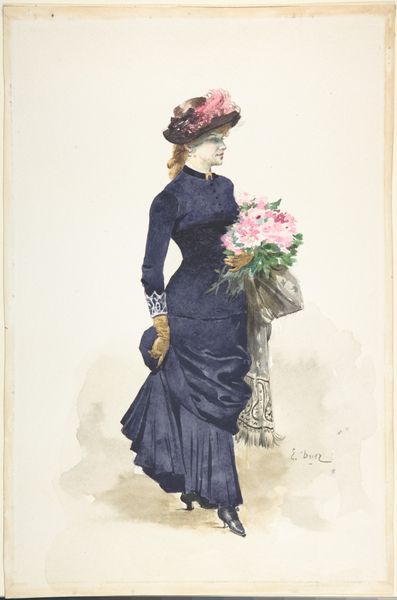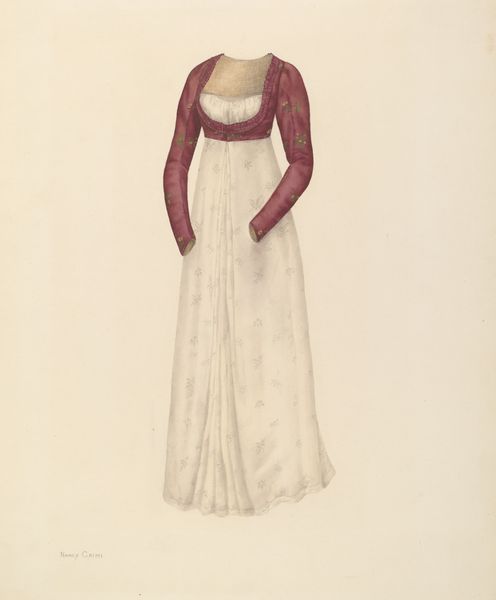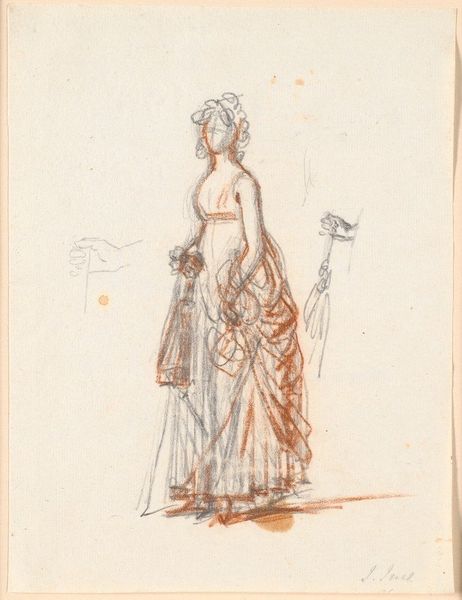
drawing, watercolor
#
portrait
#
drawing
#
caricature
#
watercolor
#
watercolour illustration
#
dress
Dimensions: height 318 mm, width 245 mm
Copyright: Rijks Museum: Open Domain
Curator: I find myself really drawn to this fashion study—"Japon 'Don Quichotte' van Doeuillet, 1910, No. 106"—created around 1910. It's watercolor and drawing. My initial thought? Melancholy and delicate beauty, like a fading flower preserved in ink. Editor: Ah, yes, a period of high romanticism filtered through the emerging influences of Japanese aesthetics—Japonisme. The dress itself, a study in draped fabric and the oversized hat, they speak to a yearning for something perhaps unattainable, a chivalrous dream, if we think of Don Quixote. Curator: Exactly! I love how it hints at that turn-of-the-century angst, the sense of change lurking beneath the surface of refined society. But there’s also this strange assertiveness in her gaze… as if she's quietly determined to tilt at her own windmills. Editor: The colour choices contribute to this quiet drama; the somber blacks and grays of the dress create a weighty elegance, playing with themes of shadow and substance. And notice the addition in pencil, there is also a drawing of a very elaborate detail near the bust, it all adds to the idea of status and desire. The oversized hat adds further visual symbolism in her desire to stand apart and express herself through status, despite its restrictions on women at the time. Curator: Yes, and her pose seems a bit theatrical, don't you think? Like she is aware of being observed but is keeping everyone guessing on the meaning of her pose. There's an almost defiant poetry there. What does "Japon" add here to "Don Quichotte"? It must add something special! Editor: I think that "Japon" in the title here refers specifically to the use of asymmetry in composition. In Don Quichotte, a great deal is always a little 'off'. There's a sense of imbalance that keeps you looking! It feels both classically chic and modern, and perhaps a little absurd as a design to be practically manufactured. Curator: It’s like a whispered rebellion, a longing for something different from society’s confines. Maybe that's why this design resonates so much even now. It whispers, 'Dare to dream; dare to be different.’ Editor: Precisely, it captures that tension perfectly. It makes me want to examine what's changed in fashion—and what hasn’t—over the past century. Curator: Same! A lot of that desire to express something in life without even having to say a thing… Editor: Food for thought… and sartorial aspiration!
Comments
No comments
Be the first to comment and join the conversation on the ultimate creative platform.
